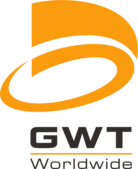
Introduction
Sea freight remains the backbone of international trade between China and Indonesia. With Indonesia’s rapidly growing economy and China’s role as a global manufacturing hub, ocean shipping is the most cost-effective and widely used method for transporting goods. Whether you are a small importer or a large enterprise, understanding the differences between FCL (volle Containerladung) und LCL (Less than Container Load) shipping is essential to managing costs and efficiency. This guide breaks down the processes, costs, and timelines for both options to help businesses make the right choice.
Why Choose Sea Freight?
- Economical for Large Volumes: Sea freight is significantly cheaper than Luftfracht, especially for heavy or bulk cargo.
- High Capacity: One container can carry up to 30 tons of cargo, ideal for manufacturers and wholesalers.
- Flexible Options: Choose between FCL and LCL depending on shipment size and urgency.
- Environmental Benefits: Per kilogram, Seefracht produces lower carbon emissions compared to air transport.
Transit Time from China to Indonesia
Shipping times vary depending on the origin and destination ports, as well as customs procedures:
- Shanghai / Ningbo to Jakarta (Tanjung Priok Port): 10-15 Tage
- Shenzhen / Guangzhou to Surabaya (Tanjung Perak Port): 12–18 days
- Qingdao / Tianjin to Medan (Belawan Port): 15-20 Tage
- Haus zu Haus delivery including customs clearance: 18–30 days
While transit is slower compared to air freight, sea freight provides significant cost savings.
FCL (Full Container Load) Explained
FCL shipping means you book an entire container for your goods, regardless of whether you fill it completely.
Advantages:
- Exclusive use of the container ensures better cargo security.
- Faster handling at ports since no consolidation or deconsolidation is needed.
- Lower per-unit cost if the container is nearly full.
- Suitable for fragile, high-value, or large-volume shipments.
Typical Container Sizes:
- 20ft container: capacity ≈ 28–30 CBM (ideal for 25–28 tons).
- 40ft container: capacity ≈ 55–60 CBM (ideal for 26–28 tons).
- 40ft High Cube (HQ): slightly taller, ≈ 68 CBM.
LCL (Less than Container Load) Explained
LCL shipping allows multiple shippers to share space in a single container. You only pay for the space your cargo occupies.
Advantages:
- Cost-effective for smaller shipments (1–15 CBM).
- Flexibility for small and medium businesses without enough volume for FCL.
- Easier to test new markets without committing to full container costs.
Challenges:
- Slower handling due to consolidation and deconsolidation at warehouses.
- Higher risk of damage since cargo shares space with other shipments.
- Customs delays can affect all shipments inside the container.
Cost Breakdown
FCL Costs
- A 20ft container from China to Jakarta typically costs between US$1,000–1,800, depending on season and carrier.
- A 40ft container ranges between US$1,800–3,000.
- Additional fees: port handling, customs clearance, trucking, and insurance.
LCL Costs
- Charged per cubic meter (CBM), usually US$30–60/CBM.
- Minimum charge often applies (1–2 CBM minimum).
- Better for shipments under 15 CBM; beyond that, FCL may be cheaper.
The Sea Freight Process Step-by-Step
- Booking & Documentation
- Submit details of cargo, including HS code, volume, and weight.
- Required documents: Commercial Invoice, Packing List, Bill of Lading.
- Cargo Pickup & Consolidation
- For LCL: cargo is consolidated at a warehouse with other shipments.
- For FCL: cargo is loaded directly into the container.
- Export Customs Clearance in China
- Chinese customs inspects and approves cargo for export.
- Sea Transport
- Container is shipped from origin port (Shanghai, Ningbo, Shenzhen, etc.) to Indonesia’s ports (Jakarta, Surabaya, Medan).
- Import Customs Clearance in Indonesia
- Duties, VAT, and other fees are applied.
- Delays may occur if documents are incomplete.
- Final Delivery
- Cargo is delivered to consignee’s warehouse via trucking.
Comparison: FCL vs LCL
| Merkmal | FCL (volle Containerladung) | LCL (Less than Container Load) |
|---|---|---|
| Am besten für | Large shipments >15 CBM | Small shipments <15 CBM |
| Kosten | Fixed container rate | Per CBM rate |
| Transitzeit | Faster (no consolidation delays) | Slower (extra handling steps) |
| Security | Higher (exclusive use) | Lower (shared container risk) |
| Flexibilität | Less flexible, must fill container | Highly flexible for small volumes |
Best Practices for Cost Savings
- Wählen Sie den richtigen Modus: If your shipment is small, LCL is more economical; for larger shipments, FCL reduces per-unit costs.
- Plan Around Peak Seasons: Avoid shipping during Chinese New Year and Indonesian holidays when rates surge.
- Optimize Packaging: Use efficient packing to maximize container space and reduce costs.
- Consider DDP Dienstleistungen: Delivered Duty Paid simplifies customs and provides all-inclusive pricing.
- Work with Reliable Freight Forwarders: Experienced partners handle paperwork, customs, and potential delays.
Schlussfolgerung
Sea freight between China and Indonesia offers an affordable and scalable logistics solution for businesses of all sizes. The choice between FCL and LCL depends on your shipment’s size, urgency, and budget. FCL provides security and cost efficiency for larger loads, while LCL offers flexibility for smaller shipments. By understanding the costs, transit times, and customs requirements, businesses can better plan their supply chain and avoid unexpected challenges.
GWT provides customized sea freight solutions including FCL, LCL, customs clearance, and door-to-door services to Indonesia. Whether you are shipping bulk goods or small batches, we ensure smooth and efficient logistics tailored to your business needs.


Thank you for reading!
Have questions, corrections, or better ideas? We’d love to hear from you!
We value every piece of feedback and promise to reply within 24 hours. Let's make this guide better together!
Note: Spam comments will not be published.